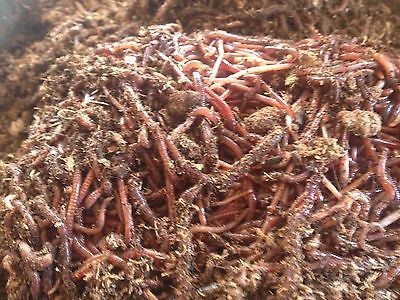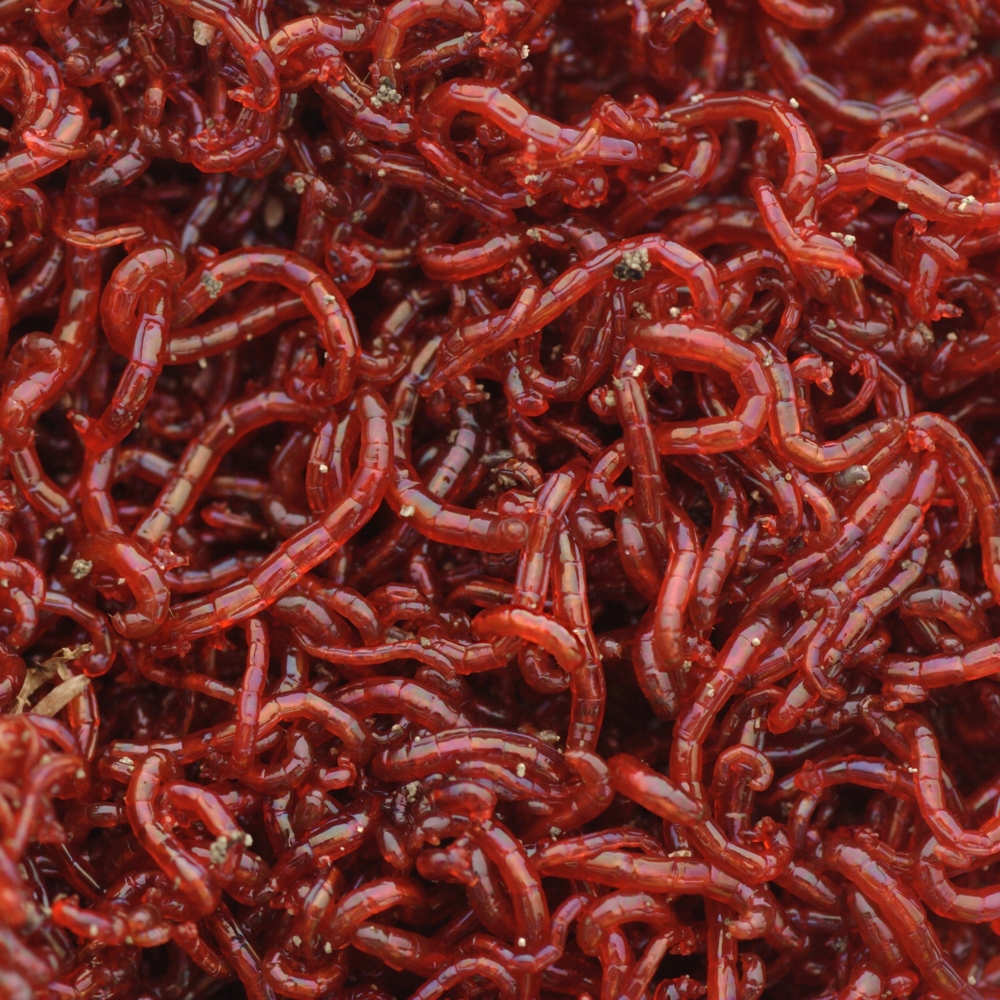Thriving red wigglers: Why they’re ideal for composting
Exactly How Red Wigglers Can Boost Your Organic Waste Recycling
Red wigglers stand for a pivotal component in boosting organic waste recycling, successfully converting everyday kitchen area scraps and yard debris into important worm spreadings. This procedure not just alleviates the volume of waste sent to land fills however likewise improves soil vigor, advertising much healthier plant development without the need for artificial plant foods. Understanding the intricacies of developing a vermicomposting system and the optimal care for these worms can significantly enhance the benefits. The question continues to be: just how can one efficiently integrate this technique right into their routine to make the most of influence?

Advantages of Red Wigglers
Red wigglers, a sort of composting earthworm, deal numerous advantages that make them invaluable in natural waste recycling. Their ability to take in a wide range of organic products makes them highly efficient decomposers. These worms can refine cooking area scraps, garden waste, and even paper products, transforming them right into nutrient-rich spreadings. This procedure not just lowers the quantity of waste sent out to landfills yet also improves soil wellness.
Additionally, red wigglers boost soil oygenation and water drainage through their burrowing tasks, promoting a much healthier root atmosphere for plants. Their castings are abundant in beneficial microorganisms and crucial nutrients, promoting robust plant development and boosting dirt framework (red wigglers). The usage of red wigglers in composting is an environmentally friendly alternative to chemical fertilizers, which can have damaging side effects.
Furthermore, vermicomposting with red wigglers is a low-maintenance and reliable technique of reusing natural waste, making it accessible for homes and communities alike. Their fast reproduction price ensures a stable supply for continuous composting efforts, further amplifying their benefits. Generally, red wigglers offer as a crucial element in lasting waste management and soil enhancement techniques.
Establishing a Vermicomposting System
Developing an effective vermicomposting system needs mindful preparation and factor to consider of numerous aspects that add to its success. The foundation of an effective system starts with selecting an ideal container. Alternatives range from business bins to homemade choices, however it is crucial that the container is well-ventilated and appropriately sized to accommodate the variety of red wigglers.
Following, the choice of bed linen product is important. Ideal bed linen consists of shredded newspaper, cardboard, or coconut coir, which offers both a habitat and a resource of carbon for the worms. The bed linens ought to be dampened but not excessively damp to protect against anaerobic problems.
Preserving the optimum atmosphere is essential. Red wigglers thrive in temperatures in between 55 ° F and 77 ° F(13 ° C to 25 ° C )and call for a pH degree around neutral. Keeping an eye on moisture degrees is additionally critical, as also much wetness can result in smell troubles, while too little can dry out the worms.
Lastly, positioning the vermicomposting system in a shaded location safeguarded from direct sunshine will certainly assist keep a stable setting. With these considerations in mind, one can efficiently establish a prospering vermicomposting system that improves organic waste recycling.
What to Feed Red Wigglers
Feeding red wigglers the ideal products is essential to maintaining a healthy vermicomposting system. These worms grow on a varied diet plan primarily composed of organic issue, that includes vegetables and fruit scraps, coffee grounds, smashed eggshells, and shredded paper. It is important to avoid feeding them meat, dairy products, oily foods, or any type of refined products, as these can create odors, bring in insects, and lead to an undesirable environment.
A well balanced diet regimen for red wigglers advertises optimal food digestion and nutrient manufacturing. Go for a mix of green materials, high in nitrogen, such as vegetable peels and turf cuttings, and brownish products, rich in carbon, like dried leaves and cardboard. This balance ensures a sustainable food source while keeping wetness levels in the worm bin.
Additionally, it is a good idea to slice or shred larger scraps to speed up decomposition and make the food a lot more accessible to the worms. Routinely checking the intake rate will assist determine the ideal amount to feed, preventing overfeeding and preserving a growing community. By giving an ideal diet, you not just sustain the health and wellness of red wigglers yet also improve the performance of your vermicomposting initiatives.
Keeping Your Worm Container
To make certain the wellness and productivity of your vermicomposting system, maintaining your worm container is vital. If it becomes also wet, excess dampness can lead to anaerobic problems, harming your worms.
Temperature level is an additional vital variable. Ideally, the worm container should be maintained between 55 ° F and 77 ° F(13 ° C to 25 ° C) Severe temperatures can emphasize or eliminate your worms. To accomplish this, position your container in a climate-controlled atmosphere far from direct sunshine or warmth sources.
Carefully transforming the bedding with a yard fork every few weeks will aid freshen the material and stop compaction - red wigglers. If this occurs, lower feeding and add even more carbon-rich materials like shredded paper or cardboard.
(Where To Buy Worms In North Carolina)
Making Use Of Worm Castings in Gardening

Worm castings, commonly described as "black gold" by gardeners, are an extremely nutritious natural fertilizer that can considerably improve soil wellness and plant development. These spreadings are produced by red Click This Link wigglers as they digest organic matter, causing an abundant, dark, crunchy compound bristling with beneficial microbes.
Incorporating worm castings right into garden soil improves its framework, aeration, and moisture retention, producing an optimum environment for root development. The high nutrient content of worm castings, consisting of nitrogen, phosphorus, and potassium, adds to energetic plant development and enhanced yields. In addition, worm castings have necessary trace minerals and enzymes that advertise the overall health and wellness of plants, allowing them to much better endure parasites and conditions.
Worm spreadings can be used straight to the soil or blended right into potting blends for container gardening. A thin layer spread over garden beds or included in compost heap can likewise enhance the microbial activity and nutrient account of the compost. As a sustainable and environmentally friendly plant food option, worm spreadings sustain organic horticulture techniques while lowering dependence on synthetic fertilizers, thereby fostering a much healthier ecological community.
Verdict
Finally, the integration of red wigglers into natural waste reusing techniques presents a viable option for improving dirt wellness and advertising sustainable gardening strategies. By efficiently decomposing kitchen scraps and garden waste, red wigglers add to nutrient-rich worm spreadings that enhance dirt oygenation and wetness retention. This eco-friendly method not just lowers land fill payments however also diminishes the dependancy on chemical fertilizers, ultimately promoting healthier ecosystems and accountable waste monitoring techniques.